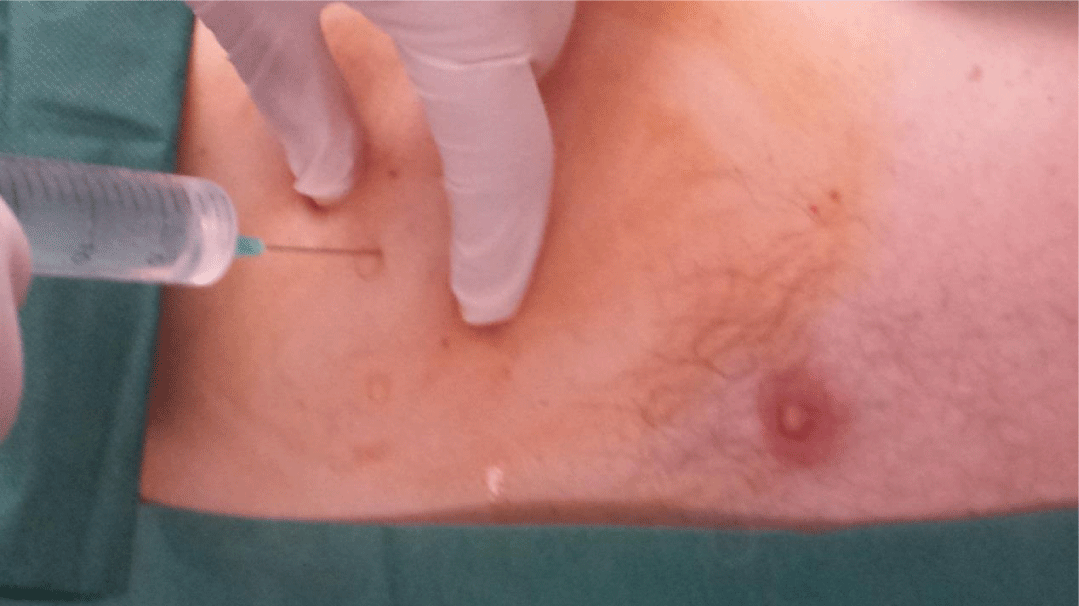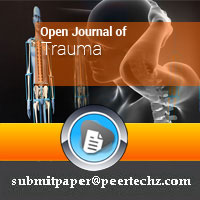Open Journal of Trauma
Rib fractures and nerve block. A 84 case study
Efstathios K Metaxas1*, Ioannis Stamatatos2, Sophia Ispanopoulou3, Konstantia Bouchra3, Stamatia Georgoudi4, Areti Falara4, Vasiliki Katsou4, Christina Balakera4 and Georgios Meimaris5
2Department of Vascular Surgery, General Hospital of Nicaea-Piraeus, Greece
3Radiology & Imaging Department, General Hospital of Nicaea-Piraeus, Greece
4Anaesthesiology Department, General Hospital of Nicaea-Piraeus, Greece
5Department of General Surgery, General Hospital of Nicaea-Piraeus, Greece
Cite this as
Metaxas EK, Stamatatos I, Ispanopoulou S, Bouchra K, Georgoudi S, et al. (2019) Rib fractures and nerve block. A 84 case study. Open J Trauma 3(1): 010-011. DOI: 10.17352/ojt.000020The aim of the study is to determine the importance of nerve block in rib fracture patients.
Methods: During the period January 2017- December 2018 a retrospective study took place. Eighty four patients diagnosed already with rib fractures underwent nerve bock by thoracic surgery department at General Hospital of Nicaea-Piraeus, Greece.
Results: All 84 patients received nerve block and 54 of them received nerve block and Diclofenac injection. After a week of post nerve block along with regularly analgesic-NSAID medication the recorded pain has been reduced to minimum.
Conclusion: Nerve block seems that is very helpful to reduce pain post rib fractures. Provides satisfactory pain relief and low cost. It can combine with analgesic and ant inflammatory medication. Reduces patients hospital stay and even more suggested admission.
Introduction
Rib fractures cause a lot of pain and are associated with atelectasis, pleural effusion, haemothorax, and pneumothorax.
Objective
The aim of this study focused to improve the effectiveness of the nerve block in pain in rib fractures patients.
Material and Methods
During the period January 2017- December 2018 a retrospective study took place. Eighty four patients diagnosed already with rib fractures underwent nerve bock by thoracic surgery department at General Hospital of Nicaea-Piraeus, Greece. All patients who underwent nerve block were asked upon questionnaire to estimate the gravity of the pain. (0- no pain, 1-2 minimal pain, 3-5 moderate pain, 6-8 severe pain, 9-10 maximum- insufferable pain). All patients who underwent nerve block had in the pain scale upon questionnaire above 5 grades. Xylocaine 10-15ml was used as local anaesthetic and was injected in the middle of the fractured rib (Figure 1).
Results
The population study of 84 patients were 53 male (63, 095%) and 31 female (36, 904%) age 24-80 years old, mean age 33 years old. Mechanism of injury: Car accident 58(69,047%), Falls 19(22,619%), Fight 7(8,333%). Location of the injury was found in 51 patients on the right side and 33 on the left side. All patients who underwent nerve block the pain scale upon questionnaire was above 5. All 84 patients received nerve block and 54 of them received nerve block and Diclofenac injection. After a week of post nerve block along with regularly analgesic-NSAID medication the recorded pain has been reduced to minimum. To mention that 18 patients refused admission in the thoracic department post nerve block and as a follow up patient no complication was documented. No atelectasis found on the chest radiography.
Only one female patient aged 64 after having nerve block felt unwell (toxicity at Xylocaine). She received iv fluids monitoring –observation for three hours. Finally she discharged home with good postoperative recovery.
Discussion
Nerve block reduces pain and also in combination bupivacaine for nerve block long lasting offers efficacy [1]. It is also very helpful and effective in treatment of Reno-ureteral colic by twelve intercostal nerve block with lidocaine versus intramuscular Diclophenac [2]. Diclophenac also can be given in combination with nerve block with excellent result. Combined usage of intercostal nerve block and tumescent anaesthesia is an effective anaesthesia technique for breast augmentation [3]. Addition of lidocaine to levobupivacaine reduces intralethal block duration [4]. Tibial nerve block it is also very useful using the ultrasound-guided inframalleolar medial plantar nerve perineural injection [5]. Provides excellent relief pain in post-thoracotomy patients.
Conclusion
Nerve block seems that is very helpful to reduce pain post rib fractures. Provides satisfactory pain relief and low cost. It can combine with analgesic and ant inflammatory medication. Patients may be without pain or minor pain for 2 or more days. Pain relief and duration can improve with simultaneously administration pain medication. Reduces patients hospital stay and even more suggested admission. To avoid Xylocaine toxicity especially to elderly and oncologic patients, attention should be given to the dosage during the administration for at least half an hour.
- Yin Q, Li J, Zheng Q, Yang X, Lv R, et al. (2017) The quaternary lidocaine derivative QX-314 in combination with bupivacaine for long-lasting nerve block: Efficacy, toxicity, and the optimal formulation in rats. PLoS One 12: e0174421. Link: https://bit.ly/2YeIluK
- Maldonado-Avila M, Del Rosario-Santiago M, Rosas-Nava JE, Manzanilla-Garcia HA, Rios-Davila VM, et al. (2017) Treatment of reno-ureteral colic by twelfth intercostal nerve block with lidocaine versus intramuscular diclofenac. Int Urol Nephrol 49: 413-417. Link: https://bit.ly/2XZK0QB
- Shimizu Y, Nagasao T, Taneda H, Sakamoto Y, Asou T, et al. (2014) Combined usage of intercostal nerve block and tumescent anaesthesia: an effective anaesthesia technique for breast augmentation. J PlastSurg Hand Surg 48: 51-55. Link: https://bit.ly/2JW5J6S
- Yazicioglu D, Akkaya T, Sonmez E, Gumus H (2014) Addition of lidocaine to levobupivacaine reduces intrathecal block duration: randomized controlled trial. Braz J Anesthesiol. 64: 159-163. Link: https://bit.ly/2LZHRC5
- Burke CJ, Adler RS (2017) Tibial Nerve Block Using an Ultrasound‐Guided Inframalleolar Medial Plantar Nerve Perineural Injection: A Technical Note. J Clin Ultrasound 45: 134-137. Link: https://bit.ly/2XMrekm
Article Alerts
Subscribe to our articles alerts and stay tuned.
 This work is licensed under a Creative Commons Attribution 4.0 International License.
This work is licensed under a Creative Commons Attribution 4.0 International License.


 Save to Mendeley
Save to Mendeley
